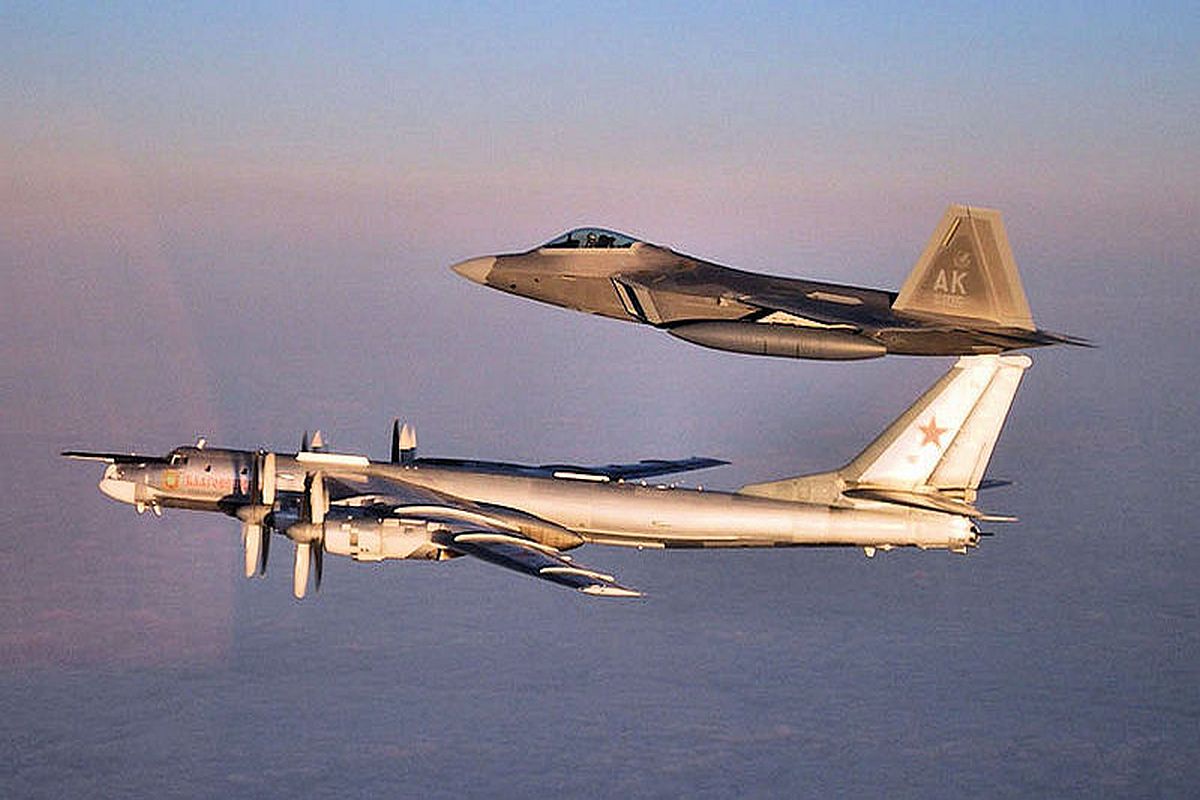Lockheed Martin’s proposal is attractive sales pitch
The most important gain though could be for the Indian Advanced Medium Combat Aircraft (AMCA) which is meant to be a futuristic 5th generation fighter.
The Russian aircraft included four Tu-95 strategic bombers and two Su-35 fighters.

A 3rd Wing F-22 Raptor escorts a Russian Air Force Tu-95 Bear bomber near Nunivak Island, 2007. (File Photo: Wikimedia Commons)
US fighters intercepted six Russian military aircraft in international airspace west of Alaska, and shadowed them until they exited the area, the North American Air Defense Command said Tuesday.
The Russian aircraft included two Tu-95 strategic bombers, which were intercepted Monday by two F-22 fighters, the command said.
Advertisement
A second group of two Tu-95 bombers and two Su-35 fighters were also intercepted by a pair of F-22 fighters, it said.
Advertisement
An AWACS surveillance plane monitored the operations, NORAD said, adding that the Russian aircraft were in international airspace throughout.
Our ability to deter and defeat threats to our citizens and vital infrastructure starts with detecting, tracking, and positively identifying aircraft our airspace. We are on alert 24 hours a day, seven days a week, 365 days a year – Gen. O’Shaughnessy, Commander NORAD
— North American Aerospace Defense Command (@NORADCommand) May 21, 2019
They were picked up as they entered the Alaska Air Defense Identification Zone, a perimeter line that lies outside national airspace but within which air traffic is kept under constant surveillance to reduce response times in case of a hostile threat.
“Our ability to deter and defeat threats to our citizens and vital infrastructure starts with detecting, tracking, and positively identifying aircraft in our airspace,” NORAD’s commander, General Terrence O’Shaughnessy, said.
“We are on alert 24 hours a day, seven days a week, 365 days a year,” he said.
The United States has four Air Defense Identification Zones. The Alaska zone extends about 200 miles (320 kilometers) from the state’s coast.
Advertisement